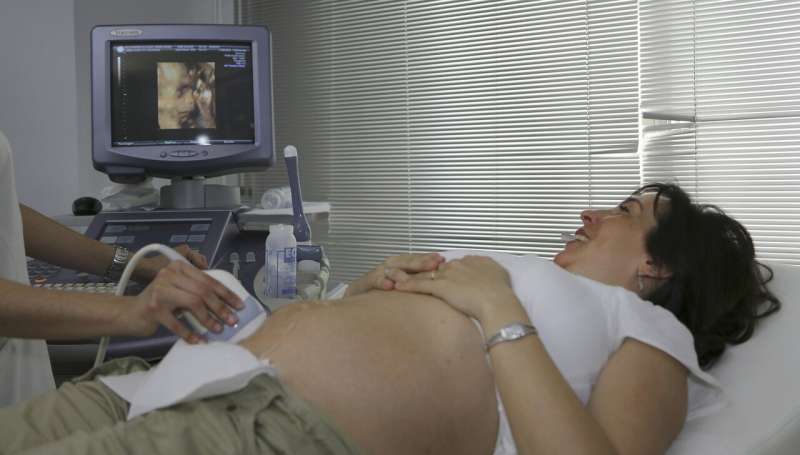Fewer Obstetric Complications with Enhanced Ultrasound Monitoring in Pregnant Women Experiencing Reduced Fetal Movements

A groundbreaking study reveals that additional ultrasound assessments, including blood vessel resistance measurements, can significantly reduce complications during delivery in women experiencing reduced fetal movements.
A recent extensive international study has demonstrated that incorporating additional ultrasound assessments during pregnancy can significantly reduce complications associated with decreased fetal movements. Led by gynecologist Sanne Gordijn at the University Medical Center Groningen, the research focused on evaluating placental function through resistance measurements in the umbilical cord and fetal brain. These measurements, particularly the cerebroplacental ratio (CPR), provide valuable insights into the health of the fetus and the functioning of the placenta.
Pregnant women often perceive less fetal movement in the later stages of pregnancy. While this can sometimes be normal, it may also indicate serious issues such as placental insufficiency leading to oxygen deprivation or fetal distress. Currently, standard practice involves immediate hospital evaluation with tests like fetal heart rate monitoring, ultrasound scans for fetal growth, and amniotic fluid assessment.
However, the study found that adding ultrasound-based measurements to determine the resistance in fetal blood vessels—using the CPR—helps healthcare providers better decide whether early delivery is necessary. An abnormal CPR suggests potential placental failure, prompting timely intervention, whereas a normal CPR can allow for continued observation, supporting the woman's preference for home birth if desired.
The findings revealed that when the CPR measurement was used, there were fewer complications around the time of birth, leading to improved outcomes for both mother and baby. With this tool, clinicians can more accurately assess fetal well-being, distinguishing cases that require urgent delivery from those that can safely wait. This approach is expected to influence future guidelines on managing pregnancies with perceived decreased fetal movement.
The study, involving 1,684 women across 23 hospitals, was published in The Lancet Obstetrics, Gynaecology & Women's Health. It underscores the importance of advanced ultrasound techniques in obstetric care, aiming to enhance fetal health monitoring and reduce adverse birth outcomes.
For more information about this research, visit Medical Xpress.
Stay Updated with Mia's Feed
Get the latest health & wellness insights delivered straight to your inbox.
Related Articles
International Healthcare Workers Report on War-Related Injuries in Gaza
A recent study reveals the unprecedented severity of injuries faced by civilians in Gaza, underscoring the urgent need for robust healthcare response systems during ongoing conflicts. source: https://medicalxpress.com/news/2025-09-international-health-workers-war-injuries.html
Personalized Risk Messages Do Not Increase Participation in Colorectal Cancer Screening
A recent study finds that personalized risk messages for colorectal neoplasia do not significantly improve screening participation, highlighting the need for alternative strategies to boost screening rates.
Innovative Oral Treatment Mimics Gastric Bypass to Combat Obesity
A new oral medication, SYNT-101, shows promise in treating obesity by mimicking the metabolic effects of gastric bypass surgery, offering a safe and effective alternative to current therapies.
New Insights into How the Immune System Fights Gut Parasites
A groundbreaking study uncovers how the immune system combats gut parasites using a protein called Gasdermin C, opening avenues for repurposing drugs like NSAIDs to treat parasitic infections.



